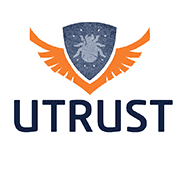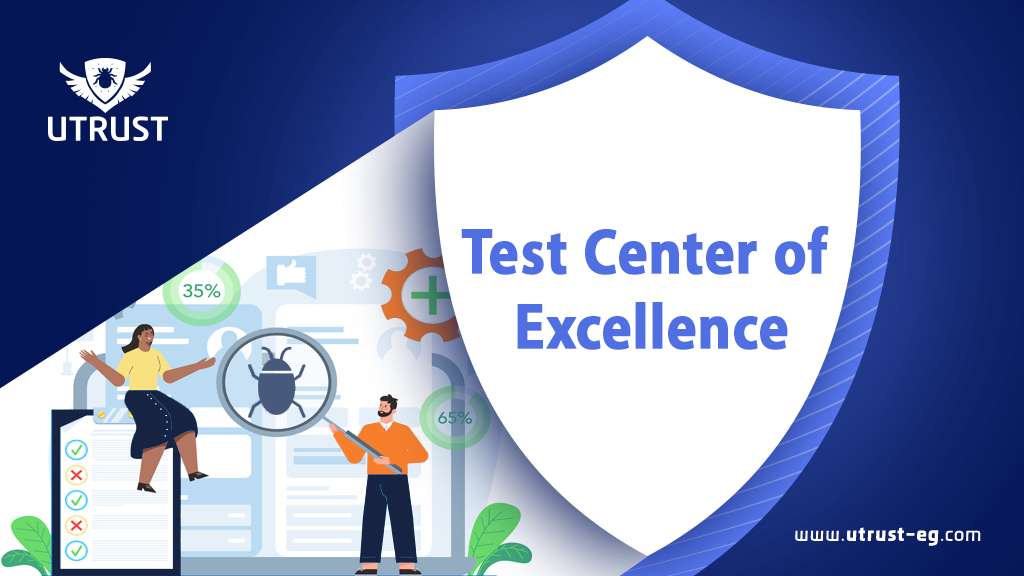In today’s technology-driven world, delivering high-quality software products is crucial for the success of any organization. To ensure consistent quality, many entities are establishing Test Centers of Excellence (TCoEs). A TCoE is a centralized unit that focuses on implementing best practices, standardized processes, and advanced methodologies to improve the overall software testing and quality assurance efforts. In this article, we will explore the key steps to establish a Test Center of Excellence within your entity to elevate software product quality to new heights.
- Define Objectives and Scope: Begin by defining the objectives and scope of your Test Center of Excellence. Clearly outline the goals you wish to achieve, such as enhancing quality, reducing defects, improving testing efficiency, and promoting collaboration across teams. Determine the scope of the TCoE, whether it will cover specific projects, departments, or the entire organization.
- Identify Key Stakeholders: Identify the key stakeholders who will be involved in establishing and managing the TCoE. This may include senior management, software development teams, testing teams, project managers, and other relevant departments. Collaboration and buy-in from stakeholders are essential for the success of the TCoE.
- Develop a Governance Model: Establish a governance model that outlines the structure, roles, and responsibilities within the Test Center of Excellence. Define the leadership roles, such as a TCoE manager or director, who will oversee the operations and strategic direction of the TCoE. Assign responsibilities to ensure effective decision-making, resource allocation, and communication channels.
- Build a Skilled and Dedicated Team: Assemble a team of skilled professionals who will be responsible for executing the testing and quality assurance activities within the TCoE. Recruit talented individuals with expertise in various testing domains, such as functional testing, performance testing, security testing, and automation testing. Provide continuous training and professional development opportunities to enhance their skills and keep them up-to-date with the latest industry trends.
- Establish Standardized Processes and Best Practices: Define standardized testing processes and best practices that will be followed across the organization. This includes test planning, test design, test execution, defect management, and reporting. Implement industry-recognized frameworks like ISTQB (International Software Testing Qualifications Board) to ensure consistency and quality in testing activities. Document these processes and make them easily accessible to all stakeholders.
- Implement Tools and Technologies: Identify and implement appropriate testing tools and technologies that align with the objectives of the TCoE. This may include test management tools, automation frameworks, performance testing tools, and defect tracking systems. Evaluate and select tools based on their compatibility with existing systems, ease of integration, scalability, and cost-effectiveness.
- Foster Collaboration and Knowledge Sharing: Promote a culture of collaboration and knowledge sharing within the TCoE. Encourage cross-functional teams to work together, share insights, and exchange best practices. Establish regular meetings, workshops, and training sessions to foster learning and innovation. Encourage the use of collaboration platforms and knowledge repositories to facilitate information sharing and continuous improvement.
- Measure and Monitor Performance: Define key performance indicators (KPIs) to measure the effectiveness and efficiency of the TCoE. Monitor and track metrics such as defect density, test coverage, test cycle time, and customer satisfaction. Regularly analyze the data to identify areas for improvement and take corrective actions accordingly. Continuously review and refine the processes to adapt to changing business needs and technological advancements.
The benefits of Test Centers of Excellence (TCoEs)
Test Centers of Excellence (TCoEs) offer numerous benefits to organizations seeking to enhance their software testing and quality assurance efforts. Some of the key advantages of implementing a TCoE are:
- Standardization: TCoEs promote standardized testing processes, methodologies, and best practices across the organization. This ensures consistency in testing activities, leading to improved quality and reduced variability in deliverables.
- Cost Efficiency: TCoEs enable cost savings by optimizing testing efforts and resources. Through centralized management and coordination, organizations can eliminate duplication of efforts, leverage economies of scale, and make efficient use of testing tools and resources.
- Enhanced Quality: TCoEs focus on improving software product quality by implementing rigorous testing techniques, industry-recognized frameworks, and quality assurance practices. This leads to the identification and mitigation of defects and issues early in the development lifecycle, resulting in higher-quality software products.
- Increased Efficiency and Productivity: TCoEs streamline testing processes, automate repetitive tasks, and leverage reusable test assets. This improves testing efficiency, reduces manual effort, and allows testers to focus on critical and complex scenarios. It enhances productivity by enabling faster turnaround times and quicker releases.
- Collaboration and Knowledge Sharing: TCoEs foster collaboration among cross-functional teams, promoting knowledge sharing and learning. By bringing together experts from different domains, TCoEs facilitate the exchange of ideas, insights, and best practices, leading to continuous improvement and innovation in testing approaches.
- Risk Mitigation: TCoEs adopt risk-based testing strategies, which involve identifying and prioritizing high-risk areas in software applications. By focusing testing efforts on critical functionalities and potential risks, organizations can mitigate risks effectively and ensure that the most critical aspects of the software are thoroughly tested.
- Improved Decision Making: TCoEs provide valuable data and metrics related to testing performance, defect trends, and quality indicators. This enables informed decision-making for project managers, stakeholders, and senior management. Data-driven insights from TCoEs support proactive measures to address quality issues, optimize resource allocation, and drive continuous improvement.
- Scalability and Flexibility: TCoEs can adapt to changing business needs and accommodate scalability requirements. With a well-defined framework and processes in place, organizations can easily scale up or down their testing operations based on project demands, ensuring optimal resource utilization.
- Increased Customer Satisfaction: By delivering high-quality software products with reduced defects and improved reliability, TCoEs contribute to enhanced customer satisfaction. Thorough testing and quality assurance lead to products that meet customer expectations, perform as intended, and provide a positive user experience.
- Competitive Advantage: TCoEs provide organizations with a competitive edge in the market. By establishing a reputation for delivering high-quality software products, organizations can attract more customers, retain existing clients, and differentiate themselves from competitors.
Is it possible to outsource Test Centers of Excellence (TCoEs) to a software testing provider?
Yes, organizations have the option to outsource their Test Centers of Excellence (TCoEs) to a software testing provider. Outsourcing TCoEs can bring several advantages, including:
- Access to Expertise: Software testing providers often have a dedicated team of experienced testing professionals with expertise in various domains and technologies. By outsourcing TCoEs, organizations can tap into this specialized knowledge and benefit from the provider’s experience in implementing best practices and cutting-edge testing methodologies.
- Cost Savings: Outsourcing TCoEs can be a cost-effective solution compared to establishing an in-house TCoE. Organizations can avoid the expenses associated with hiring, training, and managing an entire testing team. Additionally, outsourcing allows for flexible resource allocation, enabling organizations to scale their testing efforts based on project requirements.
- Focus on Core Competencies: By outsourcing TCoEs, organizations can focus on their core competencies and strategic initiatives while leaving the testing and quality assurance activities to the specialized testing provider. This allows organizations to allocate their internal resources more efficiently and concentrate on their primary business objectives.
- Faster Implementation: Outsourcing TCoEs can lead to quicker implementation compared to building an in-house TCoE from scratch. Testing providers already have established processes, tools, and frameworks in place, enabling a faster setup of the TCoE and a quicker start to the testing activities.
- Access to Advanced Tools and Technologies: Testing providers often have access to cutting-edge testing tools, automation frameworks, and technologies. By outsourcing TCoEs, organizations can leverage these tools and technologies without the need for significant upfront investments, ensuring access to the latest testing capabilities.
- Scalability and Flexibility: Outsourcing TCoEs provides organizations with the flexibility to scale their testing efforts up or down based on project requirements. Testing providers can quickly allocate additional resources when needed, ensuring optimal resource utilization and adaptability to changing business needs.
- Quality Assurance and Performance: Software testing providers have a strong focus on quality assurance and performance. They follow established testing practices, industry standards, and quality benchmarks. By outsourcing TCoEs, organizations can benefit from the expertise of the testing provider in ensuring high-quality software products and meeting performance targets.
- Risk Mitigation: Testing providers have experience in managing risks associated with software testing and quality assurance. They can identify potential risks, implement risk mitigation strategies, and provide recommendations for process improvements. Outsourcing TCoEs can help organizations mitigate risks effectively and ensure robust testing practices.
Conclusion
Establishing a Test Center of Excellence (TCoE) is a strategic initiative that brings significant enhancements to software product quality within your organization. By setting clear objectives, involving key stakeholders, implementing standardized processes, fostering collaboration, and continuously measuring performance, you can cultivate a culture of excellence in testing and quality assurance. A well-established TCoE not only improves software product quality but also drives efficiency, reduces costs, and enhances customer satisfaction, ultimately contributing to the overall success of your organization.
It is worth noting that when outsourcing TCoEs, it is crucial for organizations to carefully select a reliable and reputable software testing provider. Effective communication, clearly defined expectations, and well-defined service level agreements (SLAs) are vital elements in ensuring a successful outsourcing partnership that delivers the desired testing outcomes.
Comments are closed.






